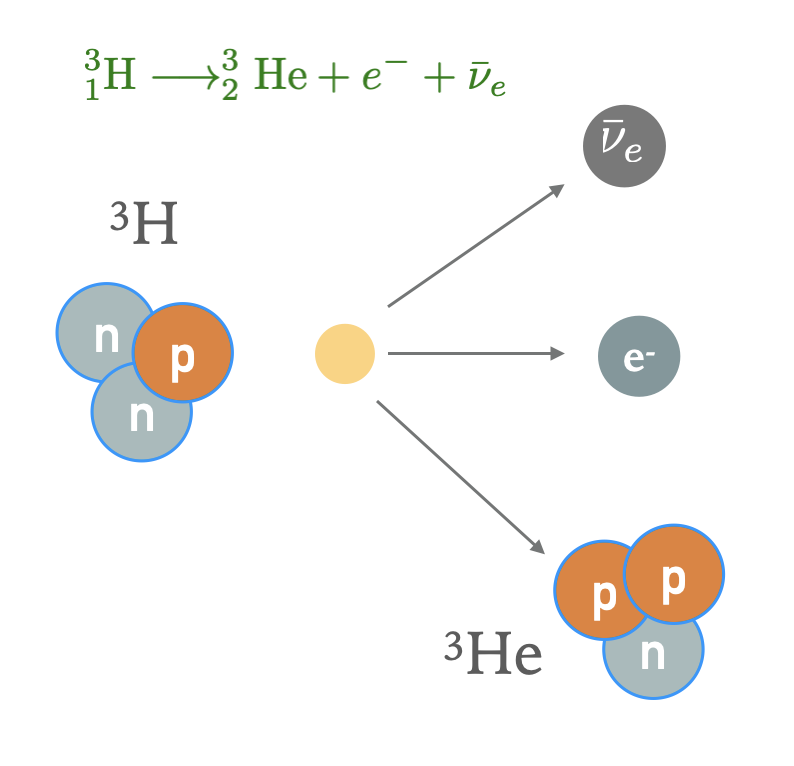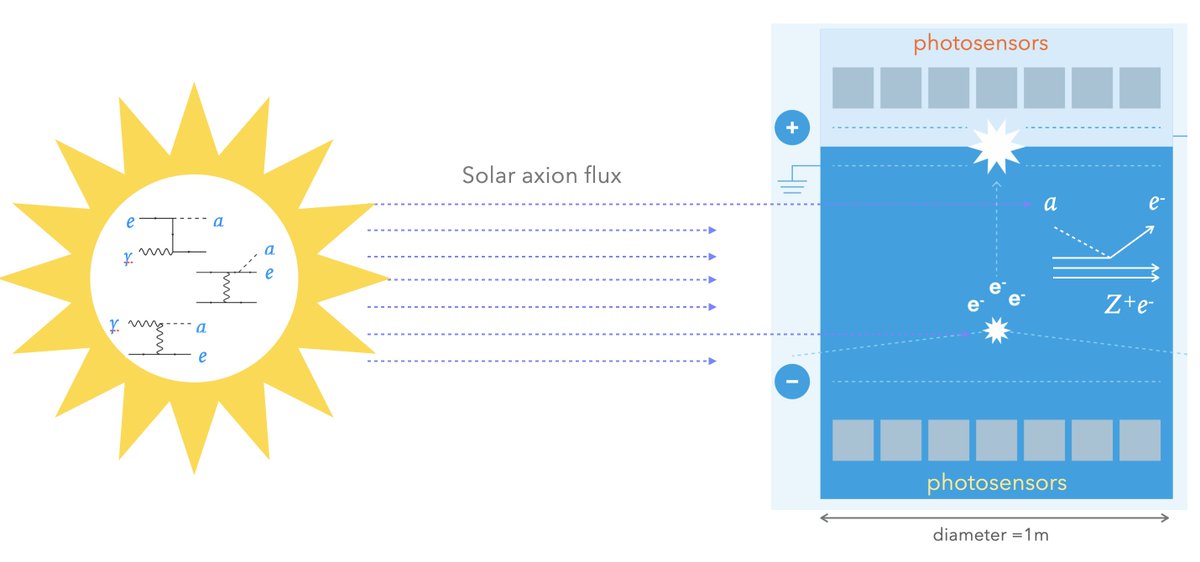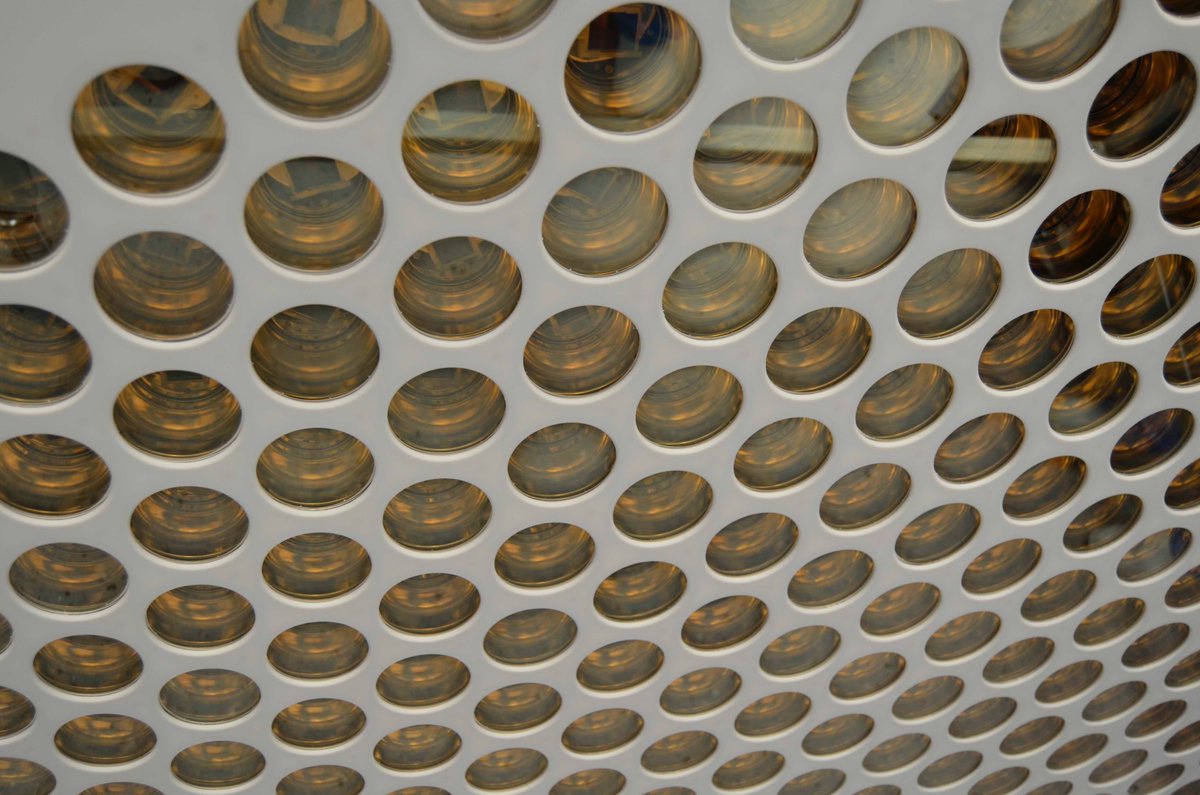1/n We saw an excess of events in the energy region 1-7 keV in XENON1T data. There are 285 electronic recoil events observed, with 232+-15 expected from the background. Extensive checks allowed us to exclude backgrounds from known particles and systematic effects as the source
2/n However, we must consider another potential background source, never before observed in a liquid xenon time projection chamber: the beta-decay of tritium, an isotope of hydrogen with 2 neutrons. It decays to 3-He with a half-life of 12.3 y and an endpoint energy of 18.6 keV
3/n The required amount of tritium in xenon to explain the excess is minute, namely 6 x 10-25 mol/mol, or less than three tritium atoms per every kilogram of liquid xenon. With current knowledge, we can neither confirm nor fully exclude it as a background component
4/n Another explanation, admittedly much more exciting if true, is solar axions. Axions are some of the most fascinating particles which were proposed in the late seventies but not yet observed. If they exist, they would provide an elegant solution to the “strong CP problem”
5/n The “strong CP problem” is related to the fact that the strong interaction is time-reversal invariant within current experimental precision, unlike the weak interaction. In addition, light and weakly interacting axions produced in the early universe are dark matter candidates
6/n Axions can also be produced in the Sun, in the electromagnetic field of charged particles. Their energy is in the keV-range, related to the temperature of the solar interior. Depending on their interaction strength, we expect ~4x10^11 solar axions per square cm and second
7/n Given their feeble interaction, axions travel to Earth & underground and can be detected in XENON1T by the axioelectric effect. The process is similar to the photoelectric effect, where an electron is emitted when a photon hits a material (the photon is replaced by the axion)
8/n The observed excess can be explained by a solar axion signal, with a statistical significance of 3.5 sigma (there is a 2 in 10’000 chance that the result is due to a statistical fluctuation)
9/n However, the data is also explained by the tritium hypothesis, with a statistical significance of 3.2 sigma. If an unconstrained tritium component is added to the background, the solar axion is still preferred, albeit with a significance reduced to 2.1 sigma
10/n Details and more in the manuscript, see http://xenon1t.org The data analysis was led by Michelle Galloway (Zurich), Evan Shockley (Chicago) and Jingqiang Ye (San Diego) & the result scrutinised by the collaboration, with 163 scientists from 28 institutions, 11 countries
11/11 We are eagerly awaiting the start of our new detector XENONnT, currently in commissioning phase underground at the Gran Sasso Laboratory ( @LngsInfn). With a total of 8.4 t of xenon and a lower background, we should know more after only a few months of data!

 Read on Twitter
Read on Twitter









